A light probe image is an omnidirectional,
high dynamic range image that records the incident illumination conditions at a particular
point in space. Such images were used in
Rendering Synthetic Objects into Real Scenes: Bridging Traditional and Image-Based
Graphics with Global Illumination and High Dynamic Range Photography at SIGGRAPH 98 to
illuminate synthetic objects with measurements of real light, and in a more recent
SIGGRAPH 2000 paper
to illuminate real-world people and objects. Light probes images have since
become a widely used tool for realistic lighting in movies and video games. High-quality
light probes are also critical for validating new computer graphics research.
In 2001, we released a gallery of light probe images including images of Grace Cathedral,
the Eucalyptus Grove, and St Paul's Bascillica. Most of these probes were assembled using
mirrored ball images. As digital cameras have advanced, it is now possible to create higher
resolution light probes. On this page, we have release several such probes that we have since
created.
Light Probe images are measurements of light in the real world, and thus are high dyanmic range. As a result, these images are provided in the several HDR formats including the RADIANCE Synthetic Imaging System .hdr / .pic image format (Described in Greg Ward's "Real Pixels" article in Graphics Gems II.) and in the Industrial Light and Magic OpenEXR format .exr.
These probes have been released in a latitude-longitude panoramic format. This is known to cartographers
as an equirectangular mapping. It maps a direction's azimuth to the horizontal coordinate and its elevation
to the vertical coordinate of the image. The top edge of the image corresponds to straight up, and the bottom
edge corresponds to straight down. The center of the image corresponds to the -z (forward) axis.
Thus, if we consider the images to have a rectangular image domain of u=[0,2], v=[0,1], we have theta=
pi*(u-1), phi=pi*v. The unit vector pointing in the corresponding direction is obtained by (Dx,Dy,Dz) =
(sin(phi)*sin(theta), cos(phi), -sin(phi)*cos(theta)). For the reverse mapping from the direction
vector in the world (Dx, Dy, Dz), the corresponding (u,v) coordinate in the light probe image is
( 1 + atan2(Dx,-Dz) / pi, arccos(Dy) / pi).
This mapping is convenient but does not have equal area. Thus to find the average pixel value one
must first multiply by the vertical cosine falloff function cos(phi).
If you're interested in creating your own high dynamic range images, the
HDRShop package developed
at the USC Institute for Creative Technologies is now available. HDRShop allows users to open
and manipulate HDR images, assemble a sequence of exposures into a single HDR image, and warp
images to and from different panoramic formats.
One of the easiest ways to create a light probe image is to acquire a high dynamic range image
of a mirrored ball; other techniques involve stitching multiple images together
(such as with RealViz's Stitcher), or using a scanning panoramic camera such as the ones available
from Panoscan or Spheron. All of the probes listed here were constructed as multi-image panoramas.
In each case 3 or more images were taken with a fisheye lens mounted on a digital SLR camera.
After compensating for radial vignetting on the lens, the images were aligned and merged into
a single panorama. This allows for much greater resolution than the mirrored ball technique.
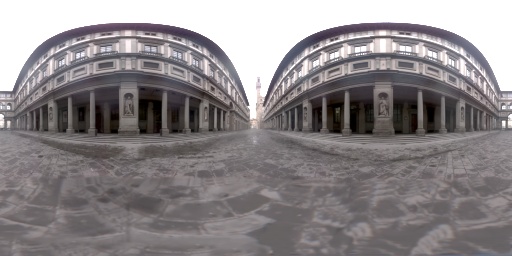
Assembled from 18 14mm images taken using the Kodak DCS 520 camera
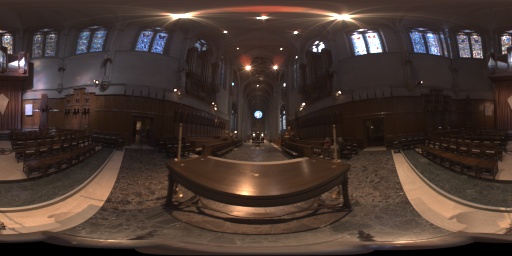
Assembled from three 8mm fisheye images taken using the Canon EOS-1ds camera
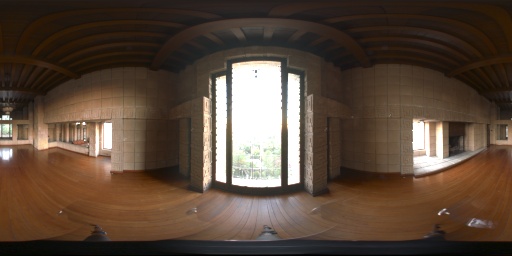
Assembled from six 8mm fisheye images taken using the Canon d60 camera
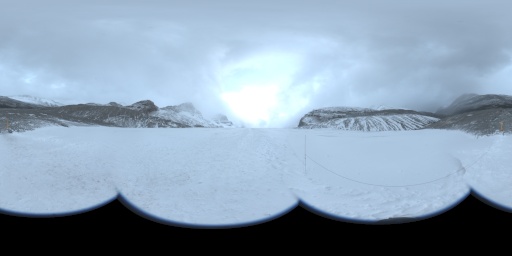
Assembled from three 8mm fisheye images taken using the Canon EOS-1ds camera
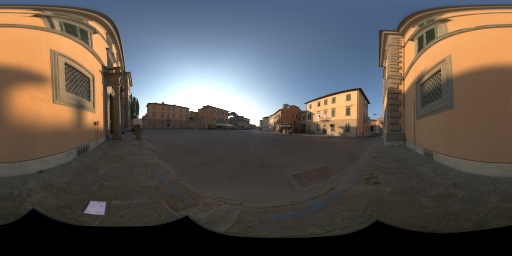
Assembled from three 8mm fisheye images taken using the Canon 5D camera
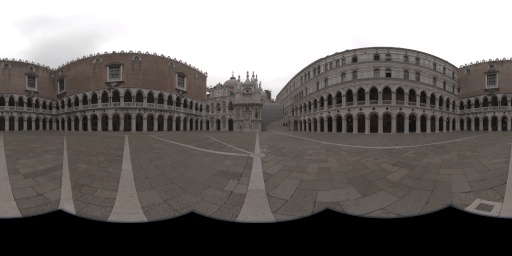
Assembled from five 8mm fisheye images taken using the Canon 5D camera